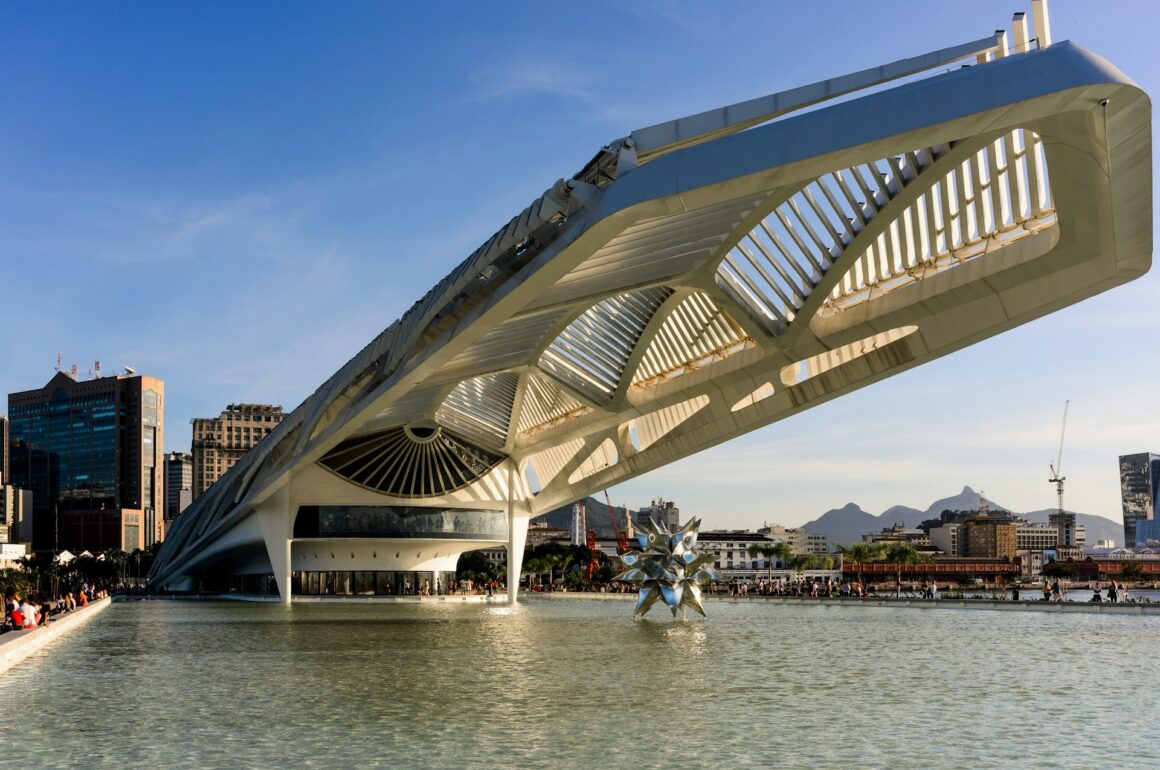
Climate change is one of the biggest challenges to our planet (and our future), with world leaders and scientific thinkers constantly grappling with new ways to save the world. Energy-efficient travel is a top priority for those curious to see the world without harming it, but what about the landmarks we see when we get there? How could those be transformed into energy-efficient buildings?
Sustainable architecture goes beyond basic insulation and solar panels – in fact, energy-efficient buildings can be some of the most gorgeous constructions in the urban jungle. Without further ado, explore the finest green constructions our Earth has to offer.
Further reading: How We’re Setting the Gold Standard For Sustainable Luxury Travel
Elbphilharmonie
Hamburg, Germany
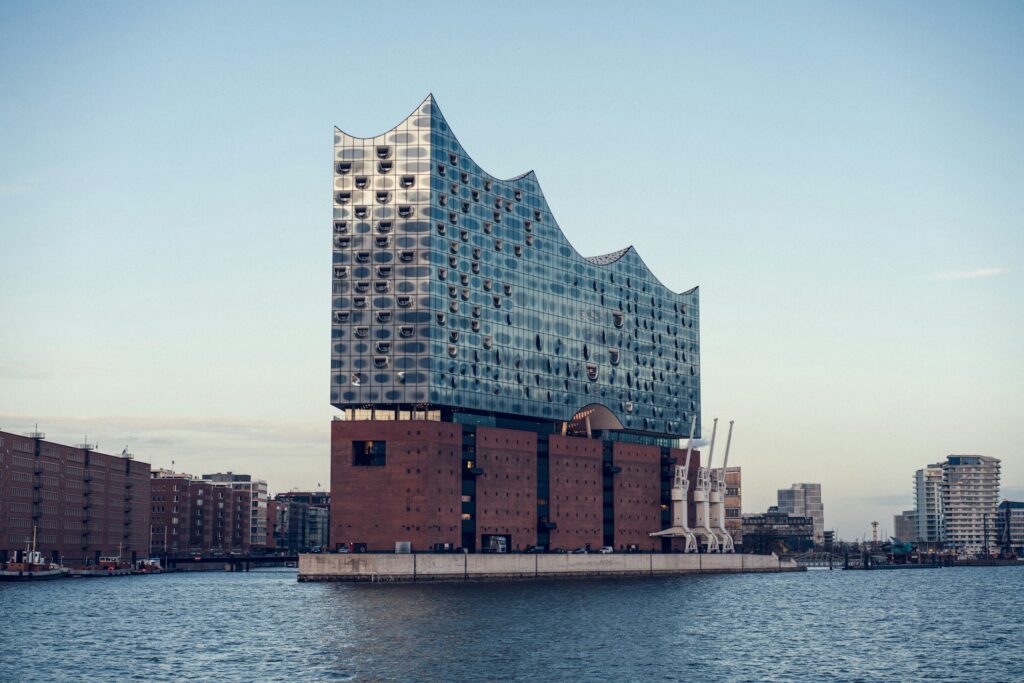
Recycling old buildings is common in Hamburg, with industrial buildings turned into public spaces in the Speicherstadt (warehouse district). One of the most energy-efficient buildings in the Speicherstadt is the Elbphilharmonie, a wave-shaped, 26-storey glass tower that houses orchestral concerts, lectures and even a hotel.
Sustainable thinking was ingrained into every part of its design, from reducing the CO2-producing concrete typically used for foundations to managing over-tourism by monitoring numbers of people in the plaza outside. Wind turbines outside Hamburg provide the venue with 100% of its energy – a truly sustainable way to light up the city’s classical music scene.
Read next: Geneva’s Hotel d’Angleterre is Committed to Positive Change
CopenHill
Copenhagen, Demark
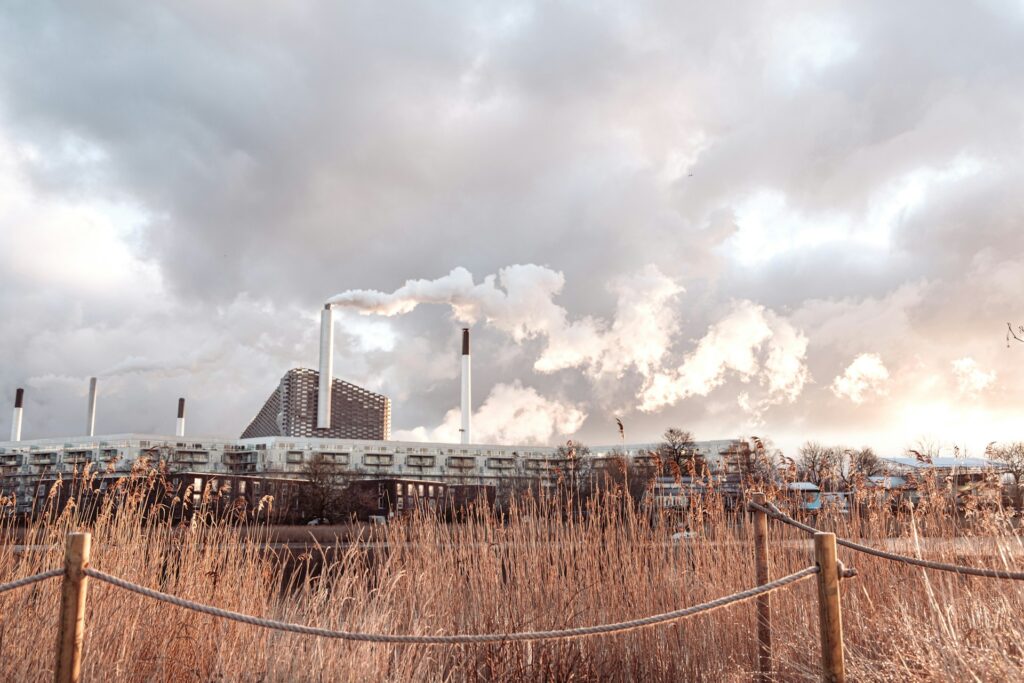
Not only does CopenHill (now called Amager Bakke) transform waste into energy via a sulfur-reduced form of incineration, it also makes innovative use of the land it stands on: the slanted roof is turned into a ski slope in the winter – complete with an epic ápres bar – and an artificial hill hiking path in the summer.
This ingenious building is also home to the world’s tallest climbing wall, with 85 vertical meters of nooks, crannies and outcrops for keen climbers to explore. Home to one of the world’s most eco-friendly attractions, Copenhagen leads the world in green tourism.
Sustainable Scandinavia: Alternative Dining & CO2-Absorbing Aprons: Welcome to Fotografiska
Pixel Building
Melbourne, Australia
View this post on Instagram
Australia’s first carbon-neutral office building not only does good; it looks good, too. The colorful four-story office was built in 2010 and is one of the most energy-efficient buildings in Australia, fitting into Melbourne’s surroundings: one of the world’s most eco-friendly tourist destinations.
The building generates its own electricity by utilising wind turbines and solar panels, and is cleverly water-balanced – the Pixel Building is able to supply its water requirements (besides drinking water) by recapturing the rainwater evaporating from its exterior. Even the pretty pixels themselves are constructed from low-carbon concrete and recycled aggregate!
We think you’ll like: The Sydney Opera House at 50: Celebrating a Global Icon
Museu do Amanhã (Museum of Tomorrow)
Rio de Janeiro, Brazil
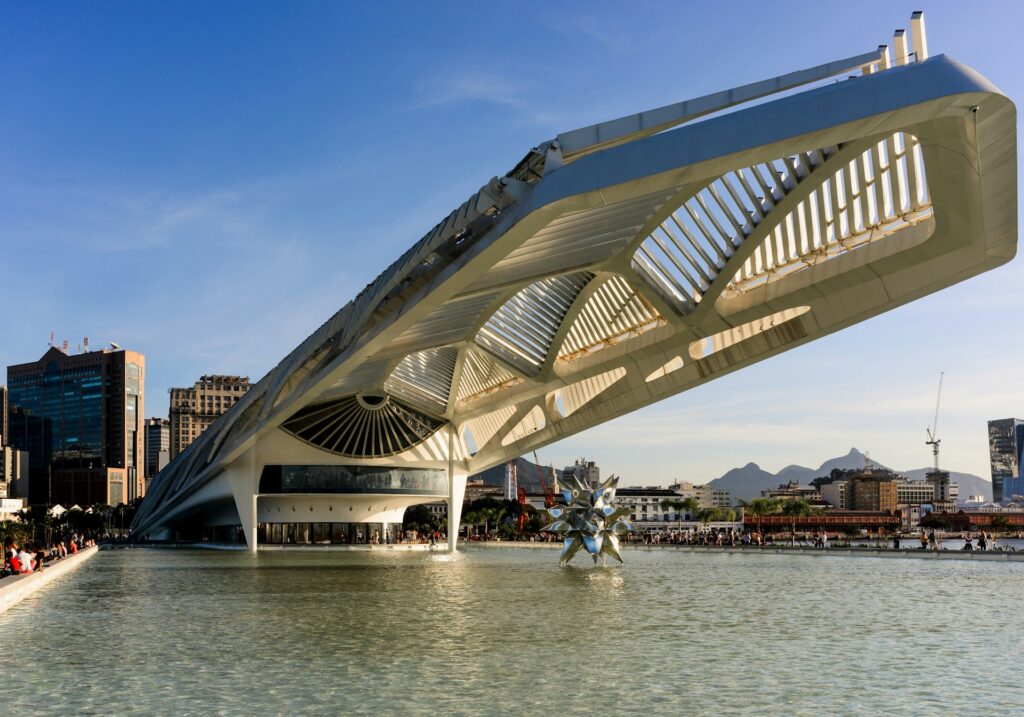
In preparation for the 2016 Olympics, Rio opened a forward-thinking, eco-friendly tourist destination: the Museum of Tomorrow, set in the Brazilian city’s old port. Beneath the uber-modern eaves of the Santiago Calatrava-designed building, the museum contains exhibits that discuss different aspects of life, from educational movies on evolution in an egg-shaped cinema to digital displays that show the dangers of overpopulation.
The building itself is future-conscious, too – solar panels move with the sun to maximise energy capture, while the cooling system utilises the cold water from the depths of the bay next door.
Exciting designs: These Stunning Designs Are the Future of Air Travel
ACROS
Fukuoka, Japan
View this post on Instagram
As energy-efficient buildings go, ACROS is pretty spectacular. From the front, the stepped facade looks like a Mayan pyramid overrun by the rainforest, flanked by the blue waters of the Naka River.
However, this is actually a 14-story local government office built in the late 1990s, designed to alleviate the ‘heat island’ effect that Fukouka struggles with in the summer. The plant-covered, terraced roofs of ACROS naturally reduce pollutants, collect rainwater, absorb CO2 and means wild plants and birds can live in harmony with the hi-tech Japanese city.
Bullitt Centre
Seattle, USA
View this post on Instagram
Billed as the “greenest commercial building in the world”, Seattle’s Bullitt Center (opened on Earth Day 2013) is truly one of the world’s most energy-efficient buildings. A stone’s throw from Pike Place Market and the Seattle Aquarium – already some seriously eco-friendly attractions – the Bullitt Center pioneers sustainable architecture by refusing to use materials containing highly dangerous chemicals in its construction, selling surplus green energy produced on its 575 solar panels back to the national grid and has successfully reduced its energy waste and carbon emissions by 86% compared to other office buildings. Meanwhile, its wood-paneled interior, shady roof and green surroundings give the Bullitt Center an air of the serene: proving that sustainable can certainly mean beautiful.





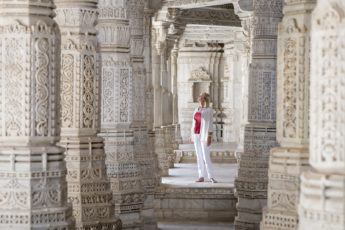
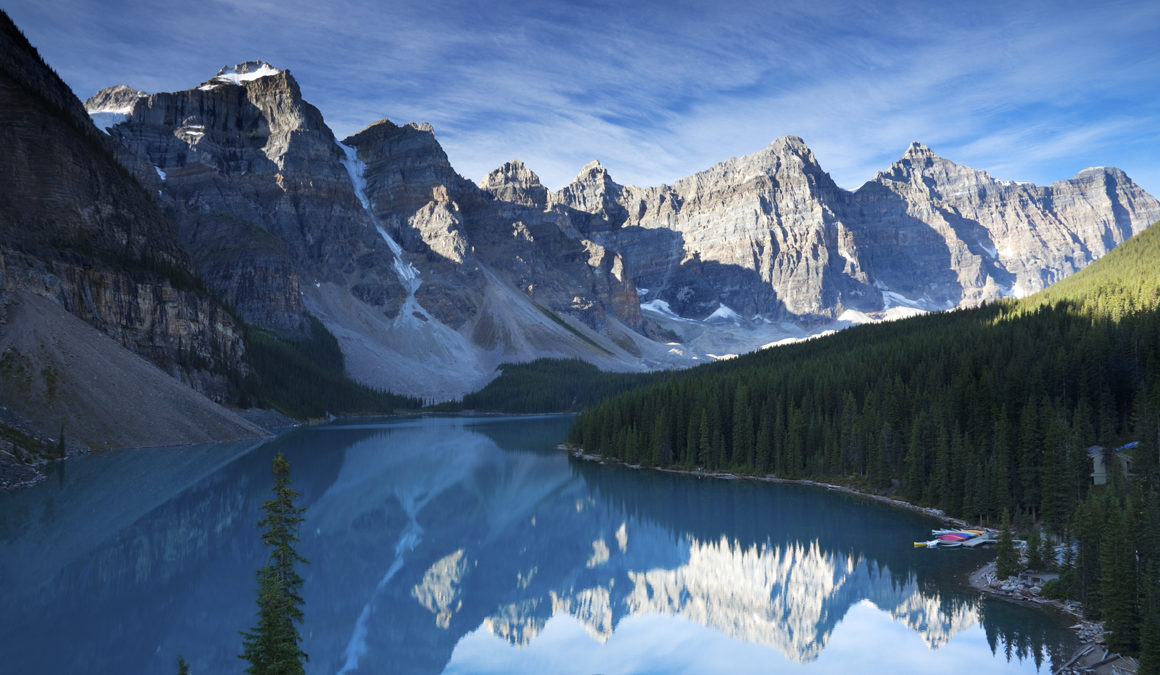
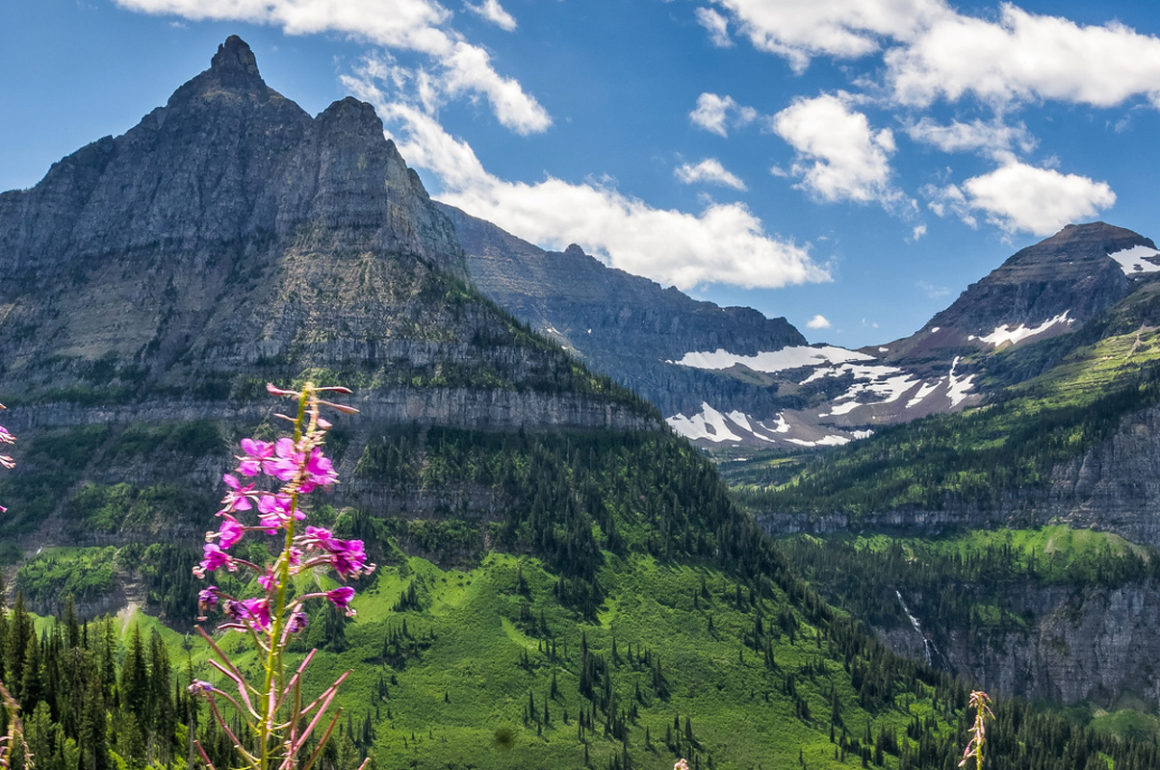
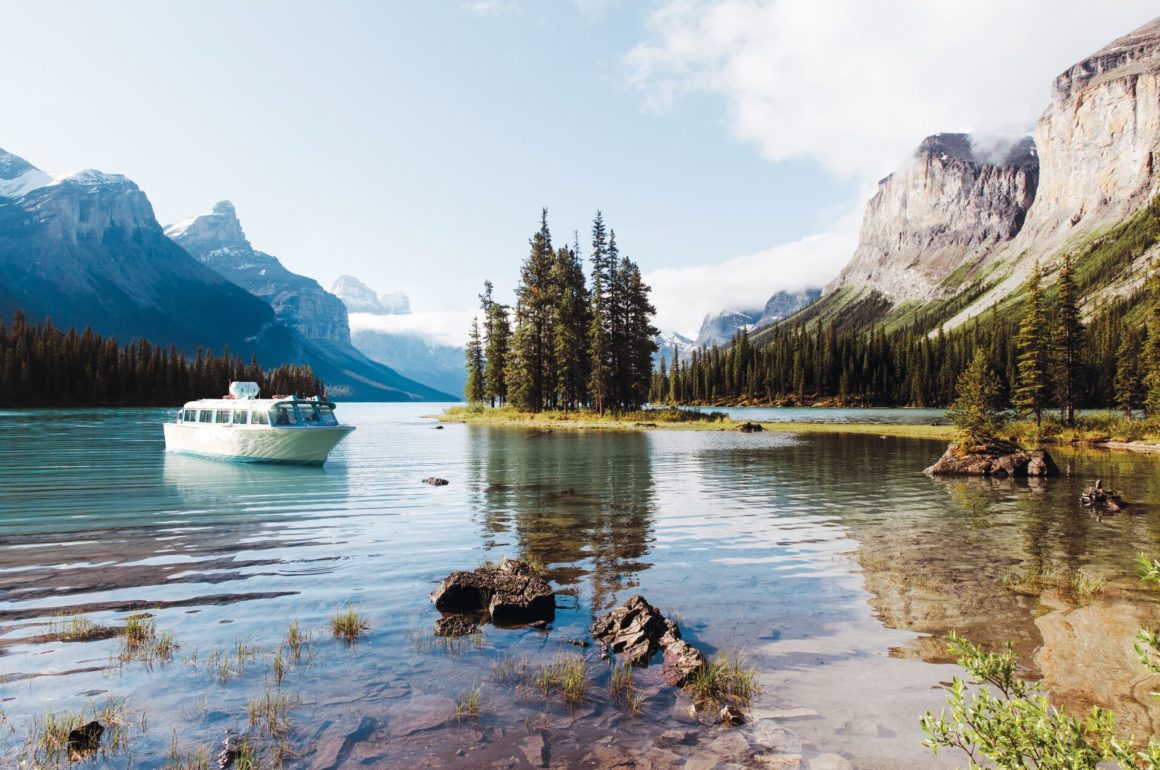

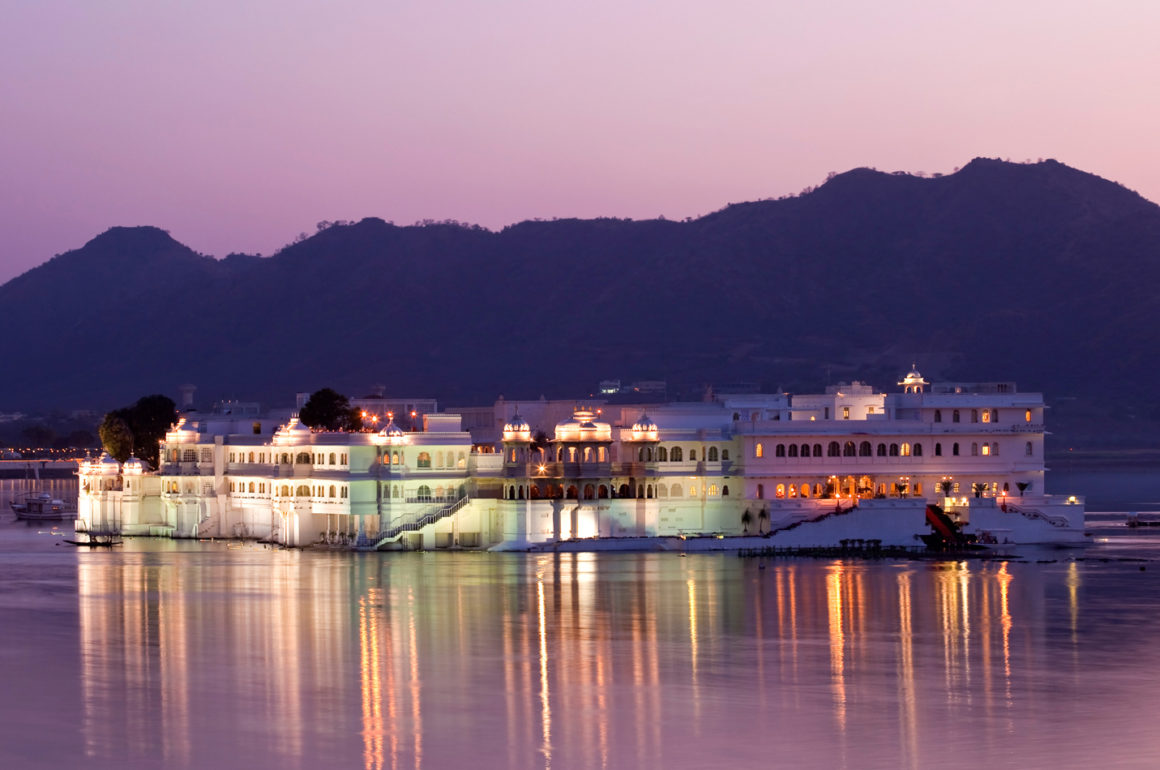
Leave a Comment